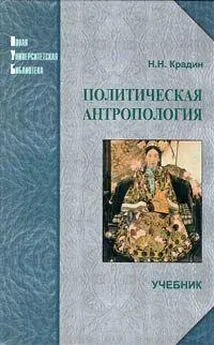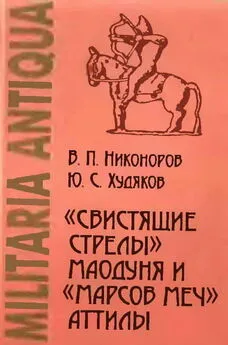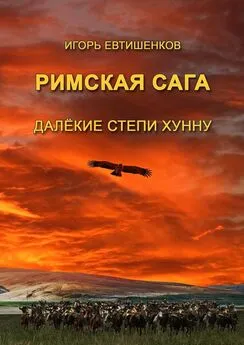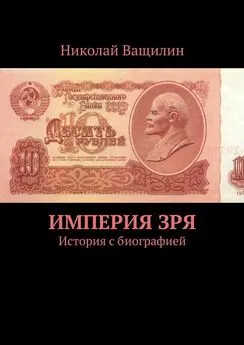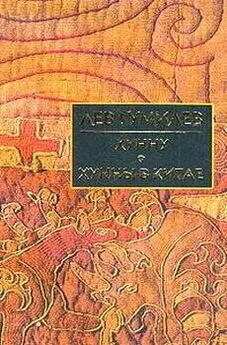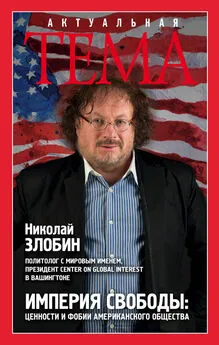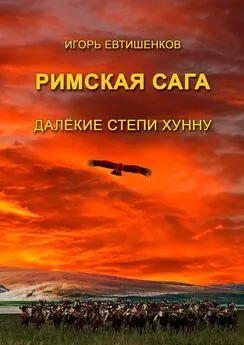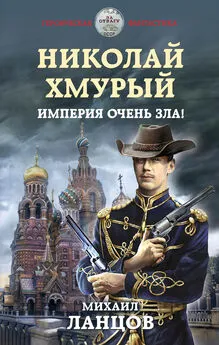Николой Крадин - Империя Хунну
- Название:Империя Хунну
- Автор:
- Жанр:
- Издательство:Логос
- Год:2001
- Город:Москва
- ISBN:5-94010-124-0
- Рейтинг:
- Избранное:Добавить в избранное
-
Отзывы:
-
Ваша оценка:
Николой Крадин - Империя Хунну краткое содержание
Книга предназначена для историков, археологов и этнологов-антропологов. Благодаря ясному языку и увлекательному стилю изложения она привлечет внимание широких кругов читателей, а также всех, интересующихся историей древних цивилизаций.
Империя Хунну - читать онлайн бесплатно полную версию (весь текст целиком)
Интервал:
Закладка:
Eisenstadt S. 1963. The Political Systems of Empires. London: Coller-Macmillan.
Fletcher J. 1986. The Mongols: ecological and social perspectives // Harvard Journal of Asiatic Studies. 46. No. 1: 11–50.
Franke H. 1987. The role of the state as a structural element in polyethnic societies // Foundation and Limits of State Power in China / Ed. by S.R. Schram. London: 87–112.
Fried M. The Evolution of Political Society: An Essay in Political Anthropology. New York: Random House.
Gailey C, Patterson Th. 1988 (eds.). Power Relations and State Formation. Washington.
Geliner E. 1988. State and Society in Soviet Thought. Oxford: Basil Blacwell. Great Wall 1986. Beijing: Cultural Relics Publishing House.
Gribb R. 1991. Nomads in archaeology. Cambridge etc.: Cambridge Univ. Press.
de Groot J.M. (ubrsz.) 1921. Chinesische Uhrkunden zur Geschichte Asiens.
Die Hunnen der vorchristlkhen Zeit. Bd. I. Berlin — Leipzig: de Gruyter.
Grousset R. 1939 [1969]. L'empire dessteppes. Attila, Gengis-Khan, Tamerlan. Paris: Payot.
Haas J. 1982. The Evolution of the Prehistoric State. N.Y.: Columbia Univ. Press.
Harmatta J. 1952. The Dissolution of the Hun Empire / Acta Archaeologica. T. 2. F. 4: 277–304.
Harmatta J. 1958. La societe de Huns a L'epoque d'Attila // Recherches Internationales a la Lumiere du Marxisme. 2: 179–238.
Hassan F.A. 1978. Demographic Archaeology // Advances in archaeological Method and Theory. Vol.1 / Ed. by M. Shiffer. New York: 49–103.
Hayashi T. 1984. Agriculture and Settlements in the Hsiung-nu // Bulletin of the Ancient Orient Museum. Vol. VI. Tokyo: 51–92.
Hayashi T. 1985. Ryakudatsu, noko, koeki kara mita yuboku kokka no hatten: Tokketsu no baai [The Development of a Nomadic Kingdom seen from the Perspectives of Pillage, Agriculture and Trade: In the Case of Tuque] // Toyoshi kenkyu. Vol. XLIV, No. 1: 110–136.
Hirth F. 1900. Sinologische Beitrage zur Geschichte der Turkvolker. 1. Die Ahnentafel Attila's nach Johannes von Thurocz // Изв. Имп. Акад. наук. Т. XIII, № 2.
Hulsewe A.F.P. 1979. China in Central Asia, The Early Stage: 125 B.C. – A.D. 23. Leiden: Bril.
Irons W. 1979. Political Stratification Among Pastoral Nomads // Pastoral Production and Society. Cambridge: 361–374.
Jagchid S. 1977. Patterns of Trade and Conflict Between China and the Nomads of Mongolia // Zentralasiatische Studien. Bd. 11: 177–204.
Jagchid S., Symons V.J. 1989. Peace, War and Trade along the Great Wall: Nomadic-Chinese Interaction through two Millennia. Bloomington.
Jarman M, Vita-Fini C, E.Higgs F. 1972. Site catchment analysis in archaeology // Man, Settlement, and Urbanism / Ed. by P. Ucko, R. Tringham, and G.Dimbleby. London etc: 61–66.
Jettmar K. 1951/1952. Hunnen und Hiung-nu — ein archaologisches Problem // Archivfur Volkerkunde. 6/7: 166–180.
Jettmar K. 1966. Die Entstehung der Reiternomaden // Saeculum. Bd. 17 (1–2).
Jettmar K. 1995. Arbeitsteilung in Stameskonfederationen // Ethnologische Wege und Lehrjahre eines Philosophen. Festschrift fur Lawrence Krader turn 75. Geburstag/ Hrsg. D. Schorkowitz. Frankfurt am Main etc.: 178–186.
Johnson A., Earle T. 1987. The Evolution of Human Societies. From Foraging Group to Agrarian State. Stanford (Cal.): Stanford Univ. Press.
Khazanov A.M. 1981. The Early State among the Eurasian Nomads // The Study of the State / Ed. by H.J.M. Claessen and P. Skalnik. The Hague: 155–175.
Khazanov A.M. 1984/1994. Nomads and the Outside World. Cambridge: Cambridge Univ. Press. 2 nd ed. Madison, WI: University of Wisconsin Press.
Khazanov A.M. 1990. Ecological limitations of nomadism in the Eurasian steppes and their social and cultural implications //Asian and African Studies. Vol. 24, No. 1: 1-15.
Khazanov A.M. 1992. Nomads and oases in Central Asia // Transition to modernity / Ed. by J.A. Hall and I.C. Jarvie. Cambridge etc.: 69–89.
Koymen M. 1944. Der Hsiung-nu Stamm der Tu-ku (Tu-ko) // Ankara Universitesi Dil ve Tarin-Cogrqfya Fakultesi Dergisi. 3/1. Ankara: 60–68.
Krader L. 1959. Ecology of Nomadic Pastoralism // International Social Science Journal. Vol. XI, No. 4: 499–510.
Krader L. 1963. Social Organization of the Mongol-Turkic Pastoral Nomads. The Hague: Mouton.
Krader L. 1968. Formation of the State. Englewood Cliffs, New York: Prentice-Hall.
Krader L. 1978. The Origins of the Nomads of Asia // The Study of the State / Ed. by H.J.M. Claessen and P. Skalnik. The Hague: 93–107.
Kradin N.N. 1993. Specific Features of Evolution in the Nomadic Societies // Prehistory and Ancient History. 4 (5). Seoul: 165–183.
Kradin N.N. 1995. The Origins of the State Among the Pastoral Nomads // Ethnologische Wege und Lehrjahre eines Philosophen. Festschrift fur Lawrence Kraderzum 75. Geburstag / Hrsg. D. Schorkowitz. Frankfurt am Main etc.: 163–177.
Kradin N.N. 1995a. The Transformation of Political Systems from Chiefdom to State: Mongolian Example, 1180(?)–1206 // Alternative Pathways to Early State I Ed. by N.N.Kradin and VA. Lynsha. Vladivostok: Dalnauka: 136–143.
Kradin N.N. 1996. Social Evolution among the Pastoral Nomads //XIII-temational Congress of Prehistoric and Protohistoric Sciences (Forli — Italia — 8/14 September 1996). Section 16. The Prehistory of Asia and Oceania. Colloquium XXXI. The Evolution of Nomadic Herding Civilizations in the Northern European Steppes: the Tools of Archaeology and History Compared. Forli: 11–15.
Kradin N.N. 2000. Hsiung-nu (200 ВС — 48 AD) // Civilizational models of politogenesis / Ed. by D.M. Bondarenko and A.V. Korotayev. Moscow: 278–304.
Kradin N.N. 2000a. Nomadic Empires in Evolutionary Perspective // Alternatives of Social Evolution / Ed. by N.N. Kradin, A.V. Korotayev et al. Vladivostok: 274–288.
Kradin N.N., Danilov S.V., Konovalov P.B. 2000. Social Structure of the Transbaikal Hsiung-nu // International Conference «Hierarchy and Power in the History of Civilizations»: Abstracts. Moscow: 72–73.
Kradin N.N., Korotayev A.V., Bondarenko D.M., de Munck V., Wason P.K. 2000 (eds.). Alternatives of Social Evolution. Vladivostok: Far Eastern Branch of the Russian Academy of Sciences.
Kradin N.N., Lynsha V.A. 1995 (eds.). Alternative Pathways to Early State. Vladivostok: Dalnauka.
Kroll J.L. 1996. The Jimi Foreign Policy under the Han // The Stokholm Journal of East Asian Studies. Vol. 7: 72–88.
Kwanten L. 1979. Imperial nomads: A history of Central Asia, 500–1500. Philadelphia: Univ. of Pennsylvania Press.
Lattimore O. 1940. Inner Asian Frontiers of China. New York, London: Oxford Univ. Press.
Loewe M.A. 1967ab. Recordsofthe Han Administration. Vol. 1–2. Cambridge: Cambridge Univ. Press.
Loewe M.A. 1974. The Campaigns of Han Wu-ti // Chinese Ways in Warfare I Ed. by F. Kierman, J. Fairbank. Cambridge.
Maenchen-Helfen O. 1973. The World of the Hunns. Los Angeles, London: Univ. of California Press. Matsuda Hisao 1934.
Kyodo no doboku toi to Saiiki sanjuroku koku [On the of T'ung-p'u tu-wei of the Hsiung-nu and on the Thirty-six States of the Western Region] // Rekishi kyoiku. Vol. 9, No. 5: 653–664.
Matsuda Hisao 1959. Kodai Bakuhoku ni okeru noko no mondai [On the Problem of Agriculture in the North of the Gobi Desert during the Ancient Times] // Yuboku shakaishi tankyu. No. 1: 15–17.
Matsuda Hisao 1967. Yuboku seikatsu to oashisu noko [Nomadic Life and Oasis Agriculture] // Rekishi kyoiku. Vol. 15, No. 9/10: 1–14.
McGovern W. 1939. The Early Empires of Central Asia: A Study of the Scythians and file Huns and file Part they Played in World History. Chapel Hill: University of North California Press.
Miniaev S.S. 1989. Neuers zur Archaologie der Xiongnu // Das Altertum / Bd. 35. No. 2: 118–125.
Miniaev S.S. 1996. Archeeologie des Xiongnu en Basse: Nouvelles decouvertes problemes // Arts Asiatica. 51: 5–12.
Mori Masao 1950. A Preliminary Study of the State of 'Hsiungnu' // Shigaku Zasshi. LIX-5: 1–21 (in Japanese).
Mori Masao 1950a. Chugoku kodai ni okeru yuboku kokka to noko kokka [Nomadic States and Agricultural States in Ancient China] // Rekishigaku kenkyu. 147: 1–13 (in Japanese).
Mori Masao 1971. On «Die 24 Tach'en» of Prof. O. Pritsak // Shigaku-Zasshi. LXXX-1: 43–60 (in Japanese).
Mori Masao 1973. Reconsideration of the Hsiung-nu state — a response to Professor O. Pritsak's criticism // Acta Asiatica. 24: 20–34.
Onuki Shizuo 1996. The Development of the heating system and above ground dwelling in the North east Asia // The First International Symposium of Bohai Culture. Vladivostok: 55–59.
Parker E. H. 1892/1893. The Turko-Scythian Tribes // China Review. Vol. 20, No. 1: 1-24; No. 2: 109–125.
Parker E.H. 1894/1895. The Turko-Scythian Tribes // China Review. Vol. 21, No. 3: 100- 19; No. 5: 129–137; No. 7: 253–267.
Parker E.H. 1895. A Thousand Years of the Tartars // Shanghai and Honkong.
Plattner S. 1989 (ed). Economic Anthropology. Stanford: Stanford Univ. Press. 489 p.
Polanyi K. 1968. Primitive, archaic and modern Economics / Ed. by G. Dalton. New York: Anchor.
Poper D.C. 1979. The Method and Theory of Site Catchment Analysis: a review // Advances in archaeological method and theory /Ed. by M. Sniffer. N.Y.: 120–140.
Pritsak O. 1954. Die 24 Tach'en: Studie zur Geschichte des Verwaltungsaufbaus der Hsiung-nu Reiche // Oriens Extremus. 1: 178–202.
Pulleyblank E.G. 1962. The Hsiung-nu Language //Asia Maior. New Series. Vol. IX. Pt. 2: 239–265.
Renfrew C. 1972. The Emergence of Civilization: ffie Cyclades and Aegean in the third millennium В. С London.
Rowlands M. 1987. Centre and periphery: a review of a concept // Centre and periphery in the ancient world / Ed. by M. Rowlands, M. Larsen, К Kristiansen. Cambridge: 1–11.
Rudenko S.I. 1969. Die Kultur der Hsiung-nu und die Hugelgraber von Noin Via. Bonn: Rudolf Habelt Ferlag.
Saint-Martin V. 1849. Les Huns blancsou Ephtalites des historiens busantins. Paris.
Sahlins M. 1968. Tribesmen. Englewood Cliffs.
Samolin W. 1957. Hsiung-nu, Hun, Turk// Central Asiatic Journal. III. No. 2: 143–150.
Service E. 1971. Primitive Social Organization. 2nd ed. New York: Radmon House.
Service E. 1975. Origins of the State and Civilization. N.Y.: Norton.
Shiratori К. 1902. Ubcr die Sprache der Hiungnu und der Tunghu — Stamme // Изв. Имп. Акад. наук. Т. XVII, № 2.
Smith J. 1967. Mongol and Nomadic Taxation // Harvard Journal of Asiatic Studies. 30: 46–85.
Southal A. 1991. The Segmentaiy State: From the Imaginary to the Matherial Means of Production // Early State Economics / Ed. by H.J.M. Claessen, P. van de Velde. New Brunswick, London: 75–96.
Suzuki Chusei 1968. China's relations with Inner Asia: the Hsiungnu, Tibet // The Chinese World Order: Traditional China's Foreign Relations / Ed. by 1С Fairbank. Cambridge (Mass.): 178–196.
Szynkiewicz S. 1989. Interactions between the nomadic cultures of central Asia and China in the Middle Ages // Centre and Periphery: Comparative studies in archaeology / Ed. By T. Champion. London etc.: 151–158.
Tezuka Takayoshi 1955. Kyodo no yokaku ni tsuide [The Fortresses of the Hsiung-nu] // Shien. Vol. 16. No. 1: 25–43.
Thapar R. 1981. The state as Empire //The Study of the State/ Ed. by H.J.M. Claessen and P. Skalnik. The Hague: 409–426.
Thompson E.A. 1948. A history of Attila and the Huns. Oxford: Oxford University Press.
Tserendash S. 2000. Pasture resource — utilization and management in Mongolia // International symposium on «Nomads and use of Pastures today». Ulanbaatar 141–143.
Uchida Ginupu 1953. Kyodo-shi kenkyu [A Study of the history of the Hsiung-nu]. Osaka: Sogen-sha.
Читать дальшеИнтервал:
Закладка:

